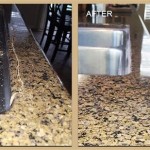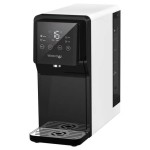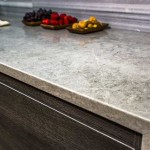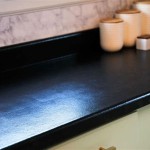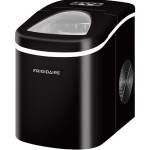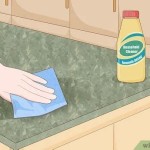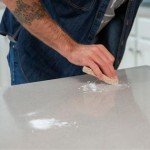How To Remove Adhesive From Granite Countertops
Granite countertops are a prized feature in many homes, known for their durability and aesthetic appeal. However, even the most resilient granite surface can fall victim to unsightly adhesive residue. This residue can stem from improperly removed stickers, remnants of protective films used during installation, construction adhesive spills, or even accidental glue applications. Removing this adhesive requires a careful approach to avoid damaging the granite's polished surface and maintaining its integrity.
This article provides a comprehensive guide on how to safely and effectively remove adhesive from granite countertops. It outlines several methods, ranging from gentle techniques to more intensive approaches, while emphasizing the importance of testing in an inconspicuous area before proceeding with full application. The specific method chosen will depend on the type of adhesive, the amount of residue, and the sensitivity of the granite surface.
Preliminary Steps: Identifying the Adhesive and Gathering Supplies
Before attempting any adhesive removal method, it is crucial to identify the type of adhesive present. Different adhesives respond differently to various solvents and techniques. For example, a water-based adhesive may be easier to remove with warm water and soap, while a stronger adhesive like epoxy or construction adhesive might require specialized solvents. If possible, determine the original purpose of the adhesive to gain insight into its composition.
Once identified, gather the necessary supplies. A well-equipped toolkit can significantly streamline the adhesive removal process and minimize the risk of damage. The following items are generally recommended:
- Soft cloths: Microfiber cloths are ideal as they are non-abrasive and will not scratch the granite surface.
- Plastic scraper: A plastic scraper is less likely to scratch the granite compared to metal alternatives. Credit cards or plastic putty knives can also be used.
- Warm water: Often effective for dissolving water-based adhesives.
- Mild dish soap: Gentle and effective for loosening adhesive bonds.
- Rubbing alcohol (isopropyl alcohol): A common solvent for removing various types of adhesives.
- Acetone (nail polish remover): A stronger solvent, but should be used with caution and tested in an inconspicuous area first.
- Goo Gone or similar adhesive remover: Specifically formulated to dissolve adhesives without damaging surfaces.
- Hair dryer: Can be used to soften certain adhesives, making them easier to scrape off.
- Baking soda paste: A mild abrasive that can help remove residue without scratching.
- Clean, dry towels: For wiping away residue and drying the surface.
- Gloves: To protect hands from solvents and adhesives.
- Safety glasses: To protect eyes from splashes and fumes.
Always read the safety instructions and warnings on any solvent or adhesive remover before use. Ensure adequate ventilation in the work area to avoid inhaling harmful fumes.
Gentle Cleaning Methods: Warm Water, Soap, and Plastic Scraper
For relatively mild adhesives or fresh spills, starting with the gentlest methods is recommended. Often, warm water and mild dish soap are sufficient to loosen the adhesive bond and allow for easy removal.
Begin by dampening a soft cloth with warm water and applying it to the adhesive residue. Allow the warm water to sit on the affected area for several minutes to soften the adhesive. This is especially effective for water-based adhesives.
Next, add a small amount of mild dish soap to the dampened cloth and gently rub the adhesive residue in a circular motion. Avoid applying excessive pressure, as this could potentially scratch the granite surface. The soap will help to break down the adhesive and lift it from the granite.
If the adhesive remains after applying warm water and soap, gently use a plastic scraper to lift the residue. Hold the scraper at a shallow angle to the granite surface to minimize the risk of scratching. Work slowly and carefully, applying gentle pressure to avoid gouging the granite. If the adhesive is particularly stubborn, reapply warm water and soap and allow it to soak for a longer period before attempting to scrape again.
Once the majority of the adhesive has been removed, wipe the area with a clean, damp cloth to remove any remaining soap residue. Finally, dry the area thoroughly with a clean, dry towel.
Using Solvents: Rubbing Alcohol, Acetone, and Adhesive Removers
If warm water, soap, and a plastic scraper are not sufficient to remove the adhesive, stronger solvents may be necessary. Rubbing alcohol (isopropyl alcohol), acetone (nail polish remover), and commercially available adhesive removers are effective options for a wide range of adhesives.
Before using any solvent, it is imperative to test it in an inconspicuous area of the granite countertop. Choose a spot that is not readily visible, such as behind an appliance or under an overhang. Apply a small amount of the solvent to the area and allow it to sit for a few minutes. Check for any discoloration, etching, or other damage to the granite surface. If no adverse effects are observed, proceed with using the solvent to remove the adhesive.
When using rubbing alcohol, dampen a soft cloth with the solvent and gently rub the adhesive residue. Allow the alcohol to sit on the affected area for a few minutes to soften the adhesive. Then, use a plastic scraper to lift the residue. Wipe the area with a clean, damp cloth to remove any remaining alcohol and dry thoroughly.
Acetone is a stronger solvent than rubbing alcohol and should be used with caution. Follow the same procedure as with rubbing alcohol, but be particularly mindful of potential damage to the granite. Apply sparingly and avoid prolonged exposure to the surface. Ensure adequate ventilation when using acetone, as it can produce strong fumes.
Commercially available adhesive removers, such as Goo Gone, are specifically formulated to dissolve adhesives without damaging surfaces. Follow the manufacturer's instructions carefully, as application methods and dwell times may vary. Generally, these products are applied to the adhesive residue, allowed to sit for a specified period, and then wiped away with a clean cloth. A plastic scraper may be used to help lift stubborn residue.
After using any solvent, it is crucial to thoroughly clean the area with warm water and soap to remove any remaining solvent residue. Dry the area completely with a clean, dry towel.
Heat Application and Baking Soda Paste: Alternative Methods
In some cases, heat can be used to soften certain adhesives, making them easier to remove. A hair dryer is a safe and effective way to apply heat to the adhesive residue. Hold the hair dryer a few inches away from the surface and direct the heat onto the adhesive for several minutes. The heat will soften the adhesive, allowing it to be scraped away with a plastic scraper.
Another alternative method involves using a baking soda paste. Baking soda is a mild abrasive that can help to remove residue without scratching the granite. To create a baking soda paste, mix baking soda with water to form a thick paste. Apply the paste to the adhesive residue and gently rub in a circular motion with a soft cloth. Rinse the area with warm water and dry thoroughly.
Both the heat application and baking soda paste methods should be used with caution and tested in an inconspicuous area first. Avoid applying excessive heat or pressure, as this could potentially damage the granite surface.
Regardless of the method chosen, patience and persistence are key to successfully removing adhesive from granite countertops. Avoid using harsh chemicals or abrasive scrubbing pads, as these can permanently damage the granite's polished surface. Testing any cleaning solution or technique in an inconspicuous area before applying it to the entire surface protects the integrity and appearance of the granite countertop.

How To Remove Adhesive From Granite Dos And Don Ts Doityourself Com

You Can Effortlessly Remove Glue From Granite Countertops Here S How To Do It

3 Ways To Remove Glue From Counter Tops Wikihow

How To Get Super Glue Off Kitchen Countertop

How To Remove Superglue From Countertops In Durango Co

Epoxy Stone Repair Granite Countertop Artistic

How To Remove Granite Countertops Four Generations One Roof

How To Safely Remove Granite Backsplash Youtube

Removing The Side Splash Backsplash From Our Bathroom Sink Young House Love

How To Remove Stains From Granite Stone Care International
See Also

